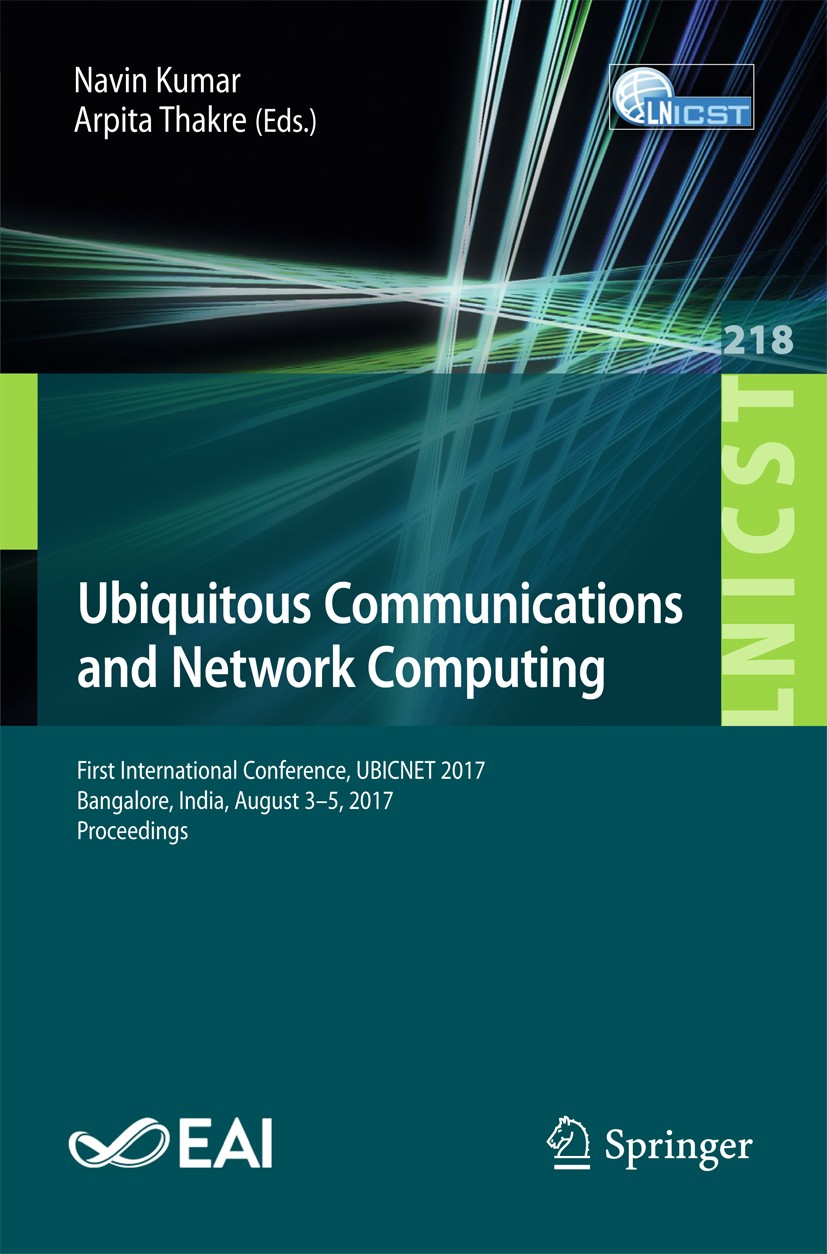| 书目名称 | Ubiquitous Communications and Network Computing |
| 副标题 | First International |
| 编辑 | Navin Kumar,Arpita Thakre |
| 视频video | http://file.papertrans.cn/941/940218/940218.mp4 |
| 概述 | Includes supplementary material: |
| 丛书名称 | Lecture Notes of the Institute for Computer Sciences, Social Informatics and Telecommunications Engi |
| 图书封面 |  |
| 描述 | This book constitutes the refereed proceedings of the First International Conference on Ubiquitous Communications and Network Computing, UBICNET 2017, held in Bangalore, India, in August 2017. The 23 full papers were selected from 71 submissions and are grouped in topical sections on safety and energy efficient computing, cloud computing and mobile commerce, advanced and software defined networks, and advanced communication systems and networks. |
| 出版日期 | Conference proceedings 2018 |
| 关键词 | authentication; computer networks; cryptography; data mining; Internet of Things (IoT); mobile computing; |
| 版次 | 1 |
| doi | https://doi.org/10.1007/978-3-319-73423-1 |
| isbn_softcover | 978-3-319-73422-4 |
| isbn_ebook | 978-3-319-73423-1Series ISSN 1867-8211 Series E-ISSN 1867-822X |
| issn_series | 1867-8211 |
| copyright | ICST Institute for Computer Sciences, Social Informatics and Telecommunications Engineering 2018 |
 |Archiver|手机版|小黑屋|
派博传思国际
( 京公网安备110108008328)
GMT+8, 2025-11-12 05:34
|Archiver|手机版|小黑屋|
派博传思国际
( 京公网安备110108008328)
GMT+8, 2025-11-12 05:34


